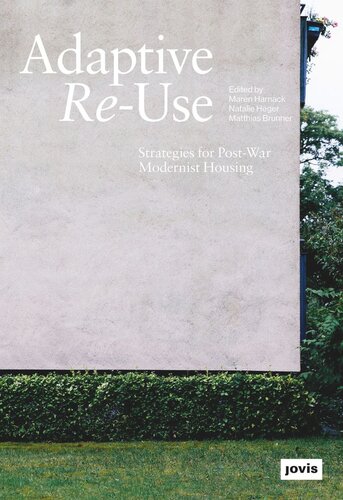

Most ebook files are in PDF format, so you can easily read them using various software such as Foxit Reader or directly on the Google Chrome browser.
Some ebook files are released by publishers in other formats such as .awz, .mobi, .epub, .fb2, etc. You may need to install specific software to read these formats on mobile/PC, such as Calibre.
Please read the tutorial at this link: https://ebookbell.com/faq
We offer FREE conversion to the popular formats you request; however, this may take some time. Therefore, right after payment, please email us, and we will try to provide the service as quickly as possible.
For some exceptional file formats or broken links (if any), please refrain from opening any disputes. Instead, email us first, and we will try to assist within a maximum of 6 hours.
EbookBell Team

0.0
0 reviewsIn prosperous regions, housing markets are under significant pressure. With the focus on preserving land and developing brownfield sites, post-war housing estates are being earmarked for densification, as their density is perceived as rather low and the ownership is often concentrated in the hands of only a few publicly owned housing associations. In this setting, postwar estates are in danger of losing their characteristic spatial structures and landscaping.
Adaptive Re-Use discusses strategies for the development of post-war housing by referring to European case studies from the period of 1945 to 1975. The contributions in this edited volume show how housing estates from different European countries are listed and preserved, and how architectural fabric can be adapted to meet today`s needs, while exploring the strategies applied to ensure the future development of large-scale housing.